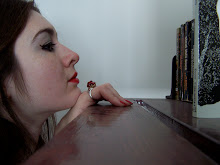Nicole Votta
A whale skeleton hangs from the gallery’s ceiling, the immense stark white form undulating with breathtaking grace.
It’s made of white plastic lawn chairs.
Brian Jungen’s Cetalogy dominates Shapeshifters, Time Travelers, and Storytellers, a new exhibit of contemporary Aboriginal art at the Royal Ontario Museum. The works exhibited range from traditional pen and ink to video presentation. Several pieces dating back to the 19th century are also included.
Co-curator Candice Hopkins said that merging of past and present is at the heart of the exhibit.
“In many Aboriginal cultures "time" is understood as cyclical, sometimes paradoxical, and there is nearly always a continued recognition of how the past influences the present,” Hopkins said.
Cheryl L’Hirendelle’s audio installation, hearing in coyote daze, invites visitors to experience a lost wilderness in the middle of the ROM’s ultra modern Crystal. It’s surprisingly effective, even though surrounded by visual art and sitting on an undeniably plastic rock.
High-Heeled Moccasins and Kent Monkman’s other pieces are a playful twist on the theme. He mixes tradition with modern fashion objects like a Louis Vuitton quiver and beaded patent leather platforms.
Many of the new pieces were commissioned specifically for this exhibit. Hopkins said that while this was a challenge it also created a unique opportunity.
“Commissioning this number of new works for an exhibition can be a gamble but on the other hand it enabled us to work quite closely with each artist throughout their process […] and it also enabled many of the works to be site specific and respond to both the unique architecture of the space and the idea for the show itself,” she said.
One of the most interesting pieces is unfortunately tucked in a corner, almost hidden by other displays. A Pleistocene-era mammoth tusk painted in the 19th century, captures a changing society in terse black lines. It charts the rapid changes in lifestyle ushered in by the arrival of the Europeans. On one side figures hunt and travel, and on the other permanent settlements have been built. It creates a powerful link between the modern and the ancient.
Cetalogy and the other pieces seem less like the products of modern artistic tastes. They become the newest and most vigorous expression of a dynamic tradition reaching back through Canada’s history, one that continues to evolve and respond to change, which is what Hopkins hopes viewers take away from the exhibit.
“I hope that there will be the perception that Aboriginal culture is not static [and] located in the past, but present and rapidly changing,” Hopkins said. “These artists are some of the best in Canada and I think that the exhibition clearly demonstrates this.”
Subscribe to:
Post Comments (Atom)

No comments:
Post a Comment